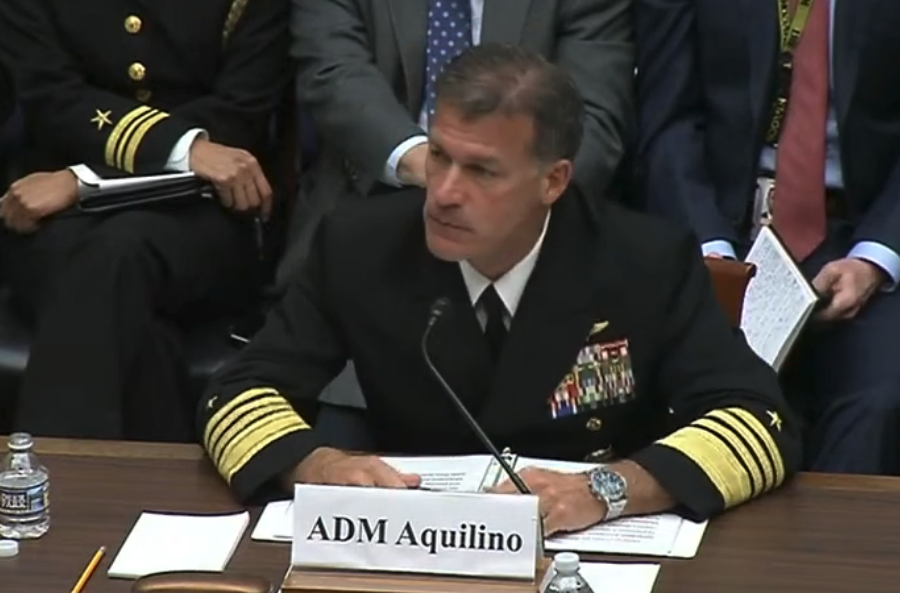Russia’s invasion of Ukraine provided a wake-up call for U.S. officials who should now recognize that if China has designs on Taiwan, “We have to look at this and say, ‘Hey, this could happen,’” said INDOPACOM’s commander Adm. John Aquilino.
Aquilino was among the Defense Department officials who appeared before the House Armed Services Committee on March 9 to answer questions about the circumstances in the region.
“We need to be more forward. We need to be more robust,” Aquilino said. That includes his top unfunded priority of a system for the defense of Guam.
China “is the most consequential strategic competitor that the United States has faced,” Aquilino said, and its government is willing to “uproot the rules-based international order to the benefit of themselves and at the expense of all others.”
HASC chair Rep. Adam Smith (D-Wash.) said the U.S. should “attempt to be a balancing force to keep the peace in Asia,” especially with regard to the independence of Taiwan.
“The belligerent language that China has been putting out recently is, you know, very, very dangerous,” Smith said. “We could easily see a China-Taiwan situation in the same way we now see a Russia-Ukraine situation.”
Aquilino, addressing the U.S. policy of strategic ambiguity toward Taiwan—of not saying whether the U.S. would defend it— said some people believe clarifying the policy would serve as a deterrent, “and there are some that would believe that it would be an accelerant.”
He perceived pros and cons to both, saying, “We ought to look very closely.”
At the same time, “trend lines” in regards to U.S. military ties with India “are moving in the right direction,” noted Ely Ratner, assistant secretary of defense for Indo-Pacific security affairs.
Smith wanted to know in part how the U.S. could strengthen its relationship with India and how the U.S. should adjust its activities in the Indo-Pacific.
“Russia and China, as we know, are actively engaged in many parts of the world,” Smith said. “The competition here really is to build broad support amongst partners … to show that partnering with the U.S. and the West is the better option for, frankly, all countries than partnering with Russia and China.”
Ratner said the U.S. partnership with India is making “historic progress” despite India’s reliance on Russia for weapons. The U.S. and India “continue to integrate and operationalize our day-to-day defense cooperation and logistics, enhance information sharing, and grow our bilateral cooperation in emerging domains, such as space and cyberspace,” he added.
The U.S. is “doubling down” on its network of allies and partners in the Indo-Pacific, Ratner said. “With the U.S.-Japan alliance as the cornerstone of regional peace, we’re deepening our defense cooperation with the Japan Self-Defense Forces, optimizing our alliance force posture, and integrating the alliance into a broader regional security network of like-minded nations.”
Another priority Aquilino mentioned is “integrated and resilient, sustainable [intelligence, surveillance, and reconnaissance] capabilities—a network that links all of that together and displays it for all forces on the battlefield in a consistent way; and then ultimately the ability to close those kill chains with the correct weapons and fires.”
The “speed and pace” at which countries such as China, Russia, and even North Korea are developing hypersonic weapons are, in part, driving Aquilino’s desire to defend Guam.
In order to “be able to posture forces in places that matter with the right capabilities,” the U.S. military “focused on Guam as a strategic hub,” Aquilino said. “The area in the Indo-Pacific is expansive—half the globe and a lot of it water,” he explained. “About $11 billion worth of construction, as we work through our posturing of our forces, … will end up on Guam, and we have to protect it.”
